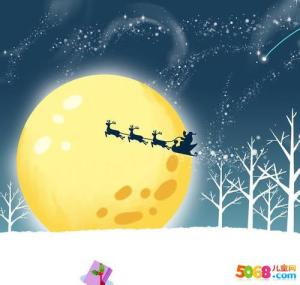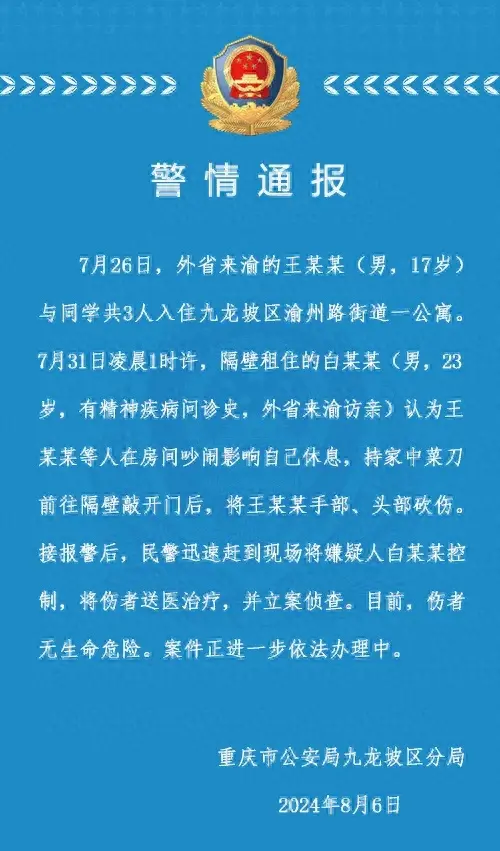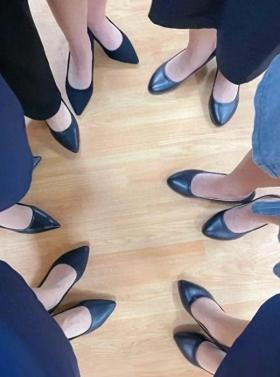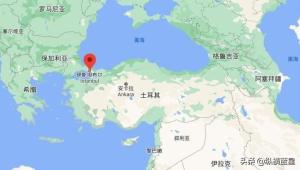苏教版(译林版)小学英语四年级下册知识点归纳总结完整版
1.关于 subject和lesson的区别
词语 | 描述 | 举例 |
subject | 表示某一门课程或者学科。 比如:Chinese, Maths, English, PE, Art, Music, Science 注意:表示学科类的单词首字母都必须大写。 | -- What subjects do you like? -- I like English and Maths. |
lesson | 表示上的具体的课。 | -- What lessons do you have this morning? -- I have Chinese, Science and Music. |
2. 关于some/any的用法
词语 | 描述 | 举例 |
some | 一般用于肯定句或征求对方看法的疑问句中。 | I can see some birds in the tree. May I have some cakes? Would you like some eggs? |
any | 一般用于否定句或疑问句中。 | Do you have any eggs? Can you see any apples on the tree? We don’t have any lessons on Sunday. |
3. 星期的描述
词语 | 描述 | 举例 |
星期日至星期六 | 周日至周六:Sunday Monday Tuesday Wednesday Thursday Friday Saturday 注意:首字母必须要大写。每周的第一天是星期日,最后一天是星期六。 | The first day of a week is Sunday. The last day of a week is Saturday. |
- 介词at, in, on与时间搭配的用法
词语 | 描述 | 举例 |
at | 表示在某个具体的时间点或某个具体的时刻。 | at four fifty 在三点五十; at six o’clock 在六点钟; at night 在夜里 |
in | 表示在某段时间范围内。 | in the morning 在上午; in the afternoon 在下午; in the evening 在晚上; in spring 在春天; in summer 在夏天; in autumn 在秋天; in winter 在秋天 |
on | 表示在某一天、某天上午/下午/晚上。 注意:在星期的前面都用on。 | on Friday; on my friend's birthday; on Sunday evening |
6. 关于in the tree与on the tree区别
词语 | 描述 | 举例 |
In the tree | 表示外来物在树上,如会飞的鸟类、会爬树的小动物、氢气球等。 | I can see some cats in the tree. |
on the tree | 表示本身长在树上的东西,如书上的树叶或果实等。 | I can see some apples on the tree. |
7. 关于good night与good evening区别
词语 | 描述 | 举例 |
good night | 睡觉前的用语,表示晚安。 | 晚间告别或睡觉前用Good night. |
good evening | 晚间见面时用语,表示晚上好。 | 晚上会面时用Good evening. |
8. 关于see、watch、look的区别
词语 | 描述 | 举例 |
see | see是看见/看到的意思,强调的四看到的结果。 | Can you see an apple in the tree? |
watch | watch强调专注地看,是观看/凝望的意思。通常用来表示看电视、比赛或电视剧等移动着的画面或物体。 | My farther usually watches TV at six thirty. |
look | look通常用来提醒或为了引起对方留神,强调看的动作。假设表示看人或物时,则用look at。 | Look! That’s my father. Look at the little dog. |
9. 关于all right使用
词语 | 描述 | 举例 |
all right | all right表示对别人的观法或建议的赞同,意为好/行/可以 。 | -- Let's go and play basketball. -- All right. |
all right还可以用于表示身体健康的意思。 | -- I’m all right. -- Are you all right, LiuTao? -- Yes. |
10. 关于同音、同义与反义词/组
同音词/词组 | 同义词/词组 | 反义词/组 |
hear同音词here | a lot of同义词many | after反义词before |
pair同音词pear | when同义词what time | come反义词go |
whose同音词who’s | what's the matter同义词what's wrong | on反义词under |
11. 关于go与go to、How many can you see与What can you see I can see区别
词/句 | 举例 |
go与go to | go home (注意:没有to) go to school |
How many can you see与What can you see | How many can you see? What can you see? 注意区分二者的意思:是有多少还是什么。 |
12. 关于be动词am/is/are
词语 | 描述 | 举例 |
am | am仅与I搭配。 | I am very happy. |
is | is与一个人或一件物品搭配,如与it、this、that搭配。 | She/He/SuHai is very cold. The dog is very lovely. It is a fine day today. What is this? |
are | are和you及两个或两个人以上或两件或两件以上物品搭配,如与we、they、these、those搭配。 | They are ill. These coats are very nice. LiuTao and Tom are at home now. Five apples are on the tree. |
注意:我用am;我们/他们/她们/它们/你们/你用are;is用在他她它。
13. 在can, can’t, want to, don’t, let’s, may后面加动词原形
Tom can have breakfast at seven.
I can't do it.
SuHai wants to drink some water.
Don’t move.
Let’s go to school.
May I speak to Miss Li.
14. 关于a/an的使用
词语 | 描述 | 举例 |
a | 通常情况下以元音字母“a e i o u”开头的单词前用an修饰,其余用 a 修饰。 | a book |
an | an apple 一个苹果; an elephant 一头大象; an orange coat 一件橙色外套; an ice cream 一个冰淇淋; have an Art lesson 上/有一节美术课 an English book 一本英语书; an egg 一个鸡蛋 |
15. a pair of后接的名词
词语 | 描述 | 举例 |
a pair of | 一类是由两个相连接片面组成,如trousers, jeans, shorts等。 | a pair of jeans 一条牛仔裤; two pairs of shorts两条短裤; a pair of trousers指一条裤子。 不能直接说a trousers或者two trousers。 |
另一类是成双成对使用的物品,如shoes, socks, gloves等。 | a pair of shoes 一双鞋子;a pair of socks 一双袜子 a pair of gloves 一副手套 |
16. 液体类单词是不可数名称,搭配的be动词用is
Here is some water for you.
Here are some pears for you.
17. go后面加动词的ing形式表示去做某项体育运动或者消遣活动
go skating, go swimming, go dancing
18. can的用法
词语 | 描述 | 举例 |
情态动词can的用法 | 表示会或能,后面跟动词原形。 | 肯定句:They can play football. 否定句:They can’t play football. |
一般疑问句 | - Can they play football? - Yes, they can. | |
特殊疑问句 | What can I do for you? |
19. 区分can you与do you...
疑问句 | 举例 |
Can you | - Can you xxx? - Yes, I can./No I can’t. |
Do you | - Do you xxx? - Yes, I do./No I don’t. |
Are you | - Are you xxx? - Yes, I am./No I’m not. |
20. 与身体不适相关的词语/词组
词语 | 举例 |
illnesses疾病: a bad cold重感冒 a bad cough咳嗽得厉害 a high fever发高烧 a headache头疼 a toothache牙疼 an earache耳朵疼 | 句型: I have a ... He/She has a ... |
feelings感觉: I’m fine/good/well.我很好。Not bad.还不错。 Just so so./ So so. 一般 Not so good. 不太好。Too bad.太糟了。 | 句型:I’m cold/ warm/ thirsty/ tired/ happy/ sad/ ill. |
21. 关注cold一词多义
词语 | 描述 | 举例 |
Cold | 用做形容词,表示寒冷的。 | In winter, it's cold. |
用做名词,表示感冒的意思。 | He has a cold. Do you have a cold? 注意区分下Are you ill? |
22. 关于It’s time to/for...句型
句型 | 举例 |
It’s time to + 动词. | It’s time to have a Chinese lesson. |
It’s time for + 名词. | It’s time for Art. |
23. 区分What time is it/ What’s the time与When...的回复方式
问句 | 回答 |
What time is it?/What’s the time? | It’s seven o’clock. |
When do you get up? | At seven o’clock. |
24. 关于What’s the matter/What’s wrong的使用
词语 | 描述 | 举例 |
What’s the matter/What’s wrong? | 表示怎么啦。 当发现有人不开心,想知道对方出了什么状况,可以用此提问,表示关切。 | - What’s the matter/What’s wrong? - I’m ill. |
当明确询问某人或某物时,在matter/wrong后面加上介词with。 | - What’s the matter with you/What’s wrong with you? -I’m hungry. -What’s the matter with your toy car? -It can’t move. | |
What’s the matter with +宾格 What’s wrong with +宾格 | What’s the matter with me(我)/ us (我们) /you (你,你们)/ him(他)/her(她)/them(他们) 怎么了? What’s wrong with me(我)/ us (我们) /you (你,你们)/ him(他)/her(她)/them(他们) 怎么了? |
25. 关于Whose句式(注意与who's意思和使用上的区别)
问句 | 举例 |
Whose +可数名词单数/不可数名称+ is it/this/that? | - Whose dress is it/this/that? - It’s my little sister’s./It’s SuHai’s. 在人名后加上’s。 |
Whose +可数名词复数+are they/these/those? | - Whose jeans are they/these/those? - They are my farther’s. |
26. 关于What和How开头的感叹句
句式 | 举例 |
How+形容词 /副词(十主语十谓语) | How nice (they are)! |
What+ a/an十形容词十名词 | What a big apple! |
What十名词短语(复数)十主语+谓语 | What lovely cats those are! |
27. 主语为第三人称单数,动词变为三单形式
描述 | 举例 |
第三人称单数是指除了我 (们) 、你 (们)、他们/她们/它们,其他单个的人或物,一般在动词后加s。特殊的: have变 has,do变does。例如:he, she, it, the boy, SuHai, my father, Liu Tao’s friend | She/He/David has a fever/has lunch. She/He/David draws some pictures in the park. He gets up at seven. |
28. 电话用语
描述 | 举例 |
假设你打电话给某人 | 可以对接电话的人说: May I speak to ...,please. |
假设你想报告对方你是谁 | 可以说: This is..speaking. |
假设你想问是谁在接电话 | 可以说: Who’s that?/Is that ... speaking? |
假设来电的人找的人不在 | 可以说: Sorry,... is not here. |
假设有人打错电话 | 可以说: Sorry, wrong number. |
注意:在电话自已这一端是this,电话对端那边是that。
(图片来源网络侵删)









发表评论
2024-08-15 01:13:18 · 来自123.232.86.145回复
2024-08-15 01:21:13 · 来自222.78.143.97回复
2024-08-15 01:28:54 · 来自222.52.202.234回复
2024-08-15 01:36:15 · 来自139.201.158.140回复
2024-08-15 01:42:56 · 来自222.72.176.15回复
2024-08-15 01:49:56 · 来自222.83.217.104回复
2024-08-15 01:57:28 · 来自182.83.125.202回复
2024-08-15 02:04:36 · 来自222.85.103.202回复
2024-08-15 02:12:50 · 来自210.30.221.199回复
2024-08-15 02:19:33 · 来自222.60.116.229回复
2024-08-15 02:26:51 · 来自61.235.227.75回复
😜🙌 💕💥🎉😄😁😅👀🚶🎊💯😴💦🔥👫👑 如果你也在关注四年级英语学习的话,可以根据这本教材的要求多多训练孩子的语感和能力,例如在这个列表中提及的重点包括阅读理解、单词拼写等基础知识都需要着重复习一下。只要功夫深铁杵磨成针相信你的孩子一定能够取得优异的成绩!💪加油吧~ 🚀
2024-08-15 02:34:35 · 来自36.61.108.23回复
2024-09-02 11:02:24 · 来自222.82.150.16回复
2024-09-02 11:03:59 · 来自222.81.48.139回复